Module 03 Review Questions(1)
.pdf
keyboard_arrow_up
School
Youngstown State University *
*We aren’t endorsed by this school
Course
6944
Subject
Business
Date
Feb 20, 2024
Type
Pages
5
Uploaded by MajorSnow13343
OMBA 6944 Operations and Supply Chain Management
Review Questions Module 3 1.
When a process fails to satisfy a customer: A.
it is quite often the customer's fault. B.
it is considered a defect. C.
it is time to reengineer the process. D.
it is usually half the customer's fault and half the company's fault. 2.
Which of the following would be considered a prevention cost of quality? A.
inspecting incoming raw materials B.
training workers to perform their jobs C.
issuing a recall of defective product before another customer is injured D.
performing a 24 hour burn-in on every item produced to make sure it works before it is shipped 3.
Which of the following would be considered an appraisal cost of quality? A.
training workers to perform their jobs B.
purchasing better tools for workers to perform their jobs C.
repairing an item under the warranty D.
running a functional test on each item before it is boxed for shipment 4.
A prime example of an internal failure cost is the: A.
labor cost associated with inspecting every item produced. B.
labor cost associated with repairing an item returned under warranty. C.
material cost of a piece of stock metal that has had too large a hole drilled in it. D.
material cost of the paint applied to the case of a finished unit. 5.
Which of the following is the cost of quality classification for costs such as scrap, rework, or repair? A.
Appraisal costs B.
Prevention costs C.
External failure costs D.
Internal failure costs
6.
A professor, dissatisfied with a product he's purchased, bad mouths the product to his class, resulting in decreased market share (since the students believe everything he tells them). The manufacturer suffers: A.
an internal failure cost. B.
an external failure cost. C.
a prevention cost. D.
an appraisal cost. 7.
Improving quality seems to be a strategic weapon in gaining market share. However, improving quality entails allocation of resources and effort. As greater effort is expended to stop defects before they occur, which one of the following costs increases? A.
prevention costs B.
appraisal costs C.
internal failure costs D.
external failure costs 8.
Which one of the following is a consequence of external failures? A.
increased returns B.
increased inventory costs C.
increased productivity D.
decreased lead time 9.
Jose is the supervisor of a laboratory. One of his testing machines seems to be producing different results for the same sample. To make sure he is delivering correct results, Jose uses a second machine to check the results of the first. This type of quality failure is known as A.
external failure B.
internal failure C.
appraisal D.
prevention 10.
Which of the following is the cost of quality classification for costs such as inspection, testing, and other tasks to ensure that the product or process is acceptable? A.
Appraisal costs B.
Prevention costs C.
External failure costs D.
Internal failure costs 11.
Increasing the quality level by better products and processes may: A.
allow a company to raise the price of the product. B.
move a company closer to a competitive priority of price.
C.
reduce prevention costs. D.
ensure that the trade-off between prevention costs and other costs of poor quality is worthwhile. 12.
Which one of the following is considered to be an appraisal cost? A.
cost of quality audits B.
cost of supplier programs C.
cost of rework D.
cost of process design 13.
Which one of the following statements is true? A.
Appraisal costs decrease as quality level decreases. B.
Appraisal costs increase as the variation of output increases. C.
Appraisal costs increase as the variation of output decreases. D.
Appraisal costs increase as quality level increases. 14.
Which one of the following is part of prevention costs? A.
the costs of quality audits B.
the costs resulting from scrap C.
the costs of improving process design and product design D.
the costs of lawsuits from injury from use of the product 15.
At which of the following steps will the cost of detecting product defects be the highest? A.
customer B.
process C.
final testing D.
raw material 16.
Which of these elements is not part of the Deming Wheel? A.
plan B.
design C.
check D.
act 17.
When considering the plan-do-check-act cycle for problem solving, data collection to measure the improvements in the process occurs in the ________ step. A.
plan B.
do C.
check D.
act
Your preview ends here
Eager to read complete document? Join bartleby learn and gain access to the full version
- Access to all documents
- Unlimited textbook solutions
- 24/7 expert homework help
Related Questions
UNE 66177 apparently allows the integration of management systems.
Select one:
a. quality and prevention.
b. Any type of standard
c. quality, prevention and environment.
arrow_forward
What does an internal quality assurance bolan include?
arrow_forward
Burger Doodle is a fast-food restaurant that processes anaverage of 680 food orders each day. The average cost of
each order is $6.15. Four percent of the orders are incor-rect, and only 10% of the defective orders can be corrected
with additional food items at an average cost of $1.75. Theremaining defective orders have to be thrown out.a. Compute the average product cost.b. In order to reduce the number of wrong orders,Burger Doodle is going to invest in a computerizedordering and cash register system. The cost of thesystem will increase the average order cost by $0.05and will reduce defective orders to 1%. What is theannual net cost effect of this quality-improvementinitiative?c. What other indirect effects on quality might be realizedby the new computerized order system?
arrow_forward
3. Describe the concept of the internal customer and its relevance from a quality perspective.
arrow_forward
The ISO 45001:2018 standard establishes:
Select one:
a. Performance criteria for occupational safety and health.
b. Recommendations for the incorporation of the occupational health and safety management system.
c. Detailed specifications for the design of the occupational health and safety management system.
arrow_forward
I need help with part c of the question.
arrow_forward
Problem 12-7 (Algo)
The following table lists all costs of quality incurred by Sam's Surf Shop last year.
Annual inspection costs
Annual cost of scrap materials
Annual rework cost
Annual cost of quality training
Annual warranty cost
Annual testing cost
$ 170,000
346,000
Appraisal cost
94, 679
516, 000
1, 666, 000
532, 000
What was Sam's appraisal cost for quality last year?
arrow_forward
9. Explain the essential components of the ISO 9000-2015 quality systems standard.These concepts: -Focus on processes.
-Improvement.
-Evidence-based decision making.
-Relationship management.
arrow_forward
Quality Cost ClassificationRequired Classify each of the following costs into one of the four quality cost (i.e., COQ) categories:1. Materials, labor, and overhead costs of scrapped units.2. Engineering time spent to determine the causes of failures to meet product specification.3. Wages and salaries for the time spent by workers to gather quality measurements.4. Information systems costs expended to develop data requirements.5. Clerical staff expenses to coordinate training programs.6. Salaries for members of problem-solving teams.7. Payment to settle a product-liability lawsuit.
arrow_forward
When is deployment of the quality function use explain?
arrow_forward
A quality control scheme is in operation for a process producing ball-bearings. Samples of 6 bearings are taken every hour and bearing diameters are measured. The mean diameter delivers is 2 cm with standard deviation of 0.002 cm. To bearing diameter specification is within the range of 1.998cm to 2.002cm.
a. Calculate the process capability for the ball bearings production process .
b. Suggest two proposal to improve the process capability.
c. What value of standard deviation will deliver a six sigma process ?
arrow_forward
* please don't take answer from chegg
A quality control procedure involves 100% inspection of parts received from a supplier. Historical records show the following defective rates have been observed.
Percent Defective Probability
0 0.10
1 0.20
2 0.45
3 0.25
The cost for the quality control 100% inspection is $325 for each shipment of 600 parts. If the shipment is not 100% inspected, defective parts will cause rework problems later in the production process. The rework cost is $30 for each defective part.
Construct a payoff table for this problem.
The plant manager is considering eliminating the inspection process in order to save the inspection…
arrow_forward
Customer Manufacturing Group (2010) Using Business Process Improvement Teams to Increase Customer Satisfaction and Improve Performance. A Customer Manufacturing Group Case Study [Online]. Available at: http://www.customermfg.com/wpfiles/csbpi.pdf (Links to an external site.)
Question
The case study from the Customer Manufacturing Group (2010) outlines the business process improvement that was undertaken within a company. Discuss what this case study demonstrates about how business process improvement should be taken within companies.
arrow_forward
Discuss how would you utilize the following tools to detect and analyse quality problems in an organisation:Cause-and-effect diagrams
arrow_forward
Explain the following and give examples.
A. Pareto Chart/Principle
B. Cause and Effect Diagram
C. PDCA Approach
D. Control Chart
E. Scatter Diagram
arrow_forward
Sub part question, Please answer both
arrow_forward
9. Explain the essential components of the ISO 9000-2015 quality systems standard.
arrow_forward
1.Describe quality control systems and key issues in manufacturing and service
2.Explain types of variation and the role of statistical process control (SPC)
arrow_forward
What is ISO standards and its types?? WHAt is MBNQA?
arrow_forward
In process improvement efforts, cost of quality is a means to quantify the total cost of quality-related efforts and deficiencies. An audit of a firm has revealed that the costs attributed to poor quality has risen sharply from a previous audit. Given that you are to provide advisory services to this firm:a. Critically enumerate the reasons accounting for the high costs of poor quality.b. Provide a comprehensive roadmap for the firm to significantly reduce their costs of poor quality and maintain a competitive edge.
arrow_forward
Quality is defined by the American Society for Quality Control as
Select one:
a.the characteristics of a product or service that affect its ability to satisfy the needs of customers.
b.a series of activities designed to create excellence in a product or service.
c.a special rank designated for manufactured products that have less than one defect per hundred.
d.any output that meets the specific standards of a society.
Quality management is applicable to
Select one:
a.manufacturing but not service businesses.
b.service but not manufacturing businesses.
c.both service and manufacturing businesses.
d.neither service nor manufacturing businesses.
arrow_forward
Problem 13-4 (Algo)
There is a 3 percent error rate at a specific point in a production process. If an inspector is placed at this point, all the defects can be
detected and eliminated. The inspector would cost $11 per hour and could inspect units in the process at the current production rate of
52 per hour.
If no inspector is hired and defects are allowed to pass this point, there is a cost of $12 per defective unit to correct the defects later
on.
Assume that the line will operate at the same rate (i.e., the current production rate) regardless of whether the inspector is hired or not.
a. If an inspector is hired, what will be the inspection cost per unit? (Round your answer to 3 decimal places.)
Cost per unit
b. If an inspector is not hired, what will be the defective cost per unit? (Round your answer to 3 decimal places.)
Cost per unit
arrow_forward
Which among the following is a variable quality?
A. Audits conducted in a period of time
B. Machine set-up time
C. Number of defective parts
D. Customer complaints
arrow_forward
Which of the following is not a prevention activity in controlling quality?
Multiple Choice
Field testing.
Certifying suppliers.
Quality training.
Process improvement.
arrow_forward
A luxury hotel has been receiving a lot of complaints from guests recently. The manager worries that if these complaints continue, the hotel will start to lose clients. Therefore, you have been hired as a consultant to correct the problem(s). A list and count of the major complaints by week for the last month is as follows:
Week 1
Error on bill 10
Room not ready at check-in 8
Room service delivery late 3
Long line at check-out 10
Week 2
Error on bill 12
Noise in hallway 2
Long line at check-out 5
Room dirty 10
Week 3
Not enough towels in room 5
Error on bill 7
Room service delivery late 6
Not enough close-up parking 2
Week 4
Room dirty 7
Error on bill 9
Room not ready at check-in 10
Long line at check-in 9
You have decided to use a few of the “Tools of Quality” to present your finding to hotel management. Prepare a report to management that includes the…
arrow_forward
Explain the following in Process Model Quality Assurance (Mention Examples if required) [10]
Validation
Certification
Verification
arrow_forward
SEE MORE QUESTIONS
Recommended textbooks for you
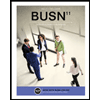
BUSN 11 Introduction to Business Student Edition
Business
ISBN:9781337407137
Author:Kelly
Publisher:Cengage Learning
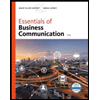
Essentials of Business Communication (MindTap Cou...
Business
ISBN:9781337386494
Author:Mary Ellen Guffey, Dana Loewy
Publisher:Cengage Learning
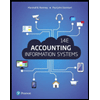
Accounting Information Systems (14th Edition)
Business
ISBN:9780134474021
Author:Marshall B. Romney, Paul J. Steinbart
Publisher:PEARSON
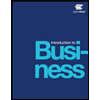
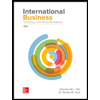
International Business: Competing in the Global M...
Business
ISBN:9781259929441
Author:Charles W. L. Hill Dr, G. Tomas M. Hult
Publisher:McGraw-Hill Education
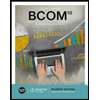
Related Questions
- UNE 66177 apparently allows the integration of management systems. Select one: a. quality and prevention. b. Any type of standard c. quality, prevention and environment.arrow_forwardWhat does an internal quality assurance bolan include?arrow_forwardBurger Doodle is a fast-food restaurant that processes anaverage of 680 food orders each day. The average cost of each order is $6.15. Four percent of the orders are incor-rect, and only 10% of the defective orders can be corrected with additional food items at an average cost of $1.75. Theremaining defective orders have to be thrown out.a. Compute the average product cost.b. In order to reduce the number of wrong orders,Burger Doodle is going to invest in a computerizedordering and cash register system. The cost of thesystem will increase the average order cost by $0.05and will reduce defective orders to 1%. What is theannual net cost effect of this quality-improvementinitiative?c. What other indirect effects on quality might be realizedby the new computerized order system?arrow_forward
- 3. Describe the concept of the internal customer and its relevance from a quality perspective.arrow_forwardThe ISO 45001:2018 standard establishes: Select one: a. Performance criteria for occupational safety and health. b. Recommendations for the incorporation of the occupational health and safety management system. c. Detailed specifications for the design of the occupational health and safety management system.arrow_forwardI need help with part c of the question.arrow_forward
- Problem 12-7 (Algo) The following table lists all costs of quality incurred by Sam's Surf Shop last year. Annual inspection costs Annual cost of scrap materials Annual rework cost Annual cost of quality training Annual warranty cost Annual testing cost $ 170,000 346,000 Appraisal cost 94, 679 516, 000 1, 666, 000 532, 000 What was Sam's appraisal cost for quality last year?arrow_forward9. Explain the essential components of the ISO 9000-2015 quality systems standard.These concepts: -Focus on processes. -Improvement. -Evidence-based decision making. -Relationship management.arrow_forwardQuality Cost ClassificationRequired Classify each of the following costs into one of the four quality cost (i.e., COQ) categories:1. Materials, labor, and overhead costs of scrapped units.2. Engineering time spent to determine the causes of failures to meet product specification.3. Wages and salaries for the time spent by workers to gather quality measurements.4. Information systems costs expended to develop data requirements.5. Clerical staff expenses to coordinate training programs.6. Salaries for members of problem-solving teams.7. Payment to settle a product-liability lawsuit.arrow_forward
- When is deployment of the quality function use explain?arrow_forwardA quality control scheme is in operation for a process producing ball-bearings. Samples of 6 bearings are taken every hour and bearing diameters are measured. The mean diameter delivers is 2 cm with standard deviation of 0.002 cm. To bearing diameter specification is within the range of 1.998cm to 2.002cm. a. Calculate the process capability for the ball bearings production process . b. Suggest two proposal to improve the process capability. c. What value of standard deviation will deliver a six sigma process ?arrow_forward* please don't take answer from chegg A quality control procedure involves 100% inspection of parts received from a supplier. Historical records show the following defective rates have been observed. Percent Defective Probability 0 0.10 1 0.20 2 0.45 3 0.25 The cost for the quality control 100% inspection is $325 for each shipment of 600 parts. If the shipment is not 100% inspected, defective parts will cause rework problems later in the production process. The rework cost is $30 for each defective part. Construct a payoff table for this problem. The plant manager is considering eliminating the inspection process in order to save the inspection…arrow_forward
arrow_back_ios
SEE MORE QUESTIONS
arrow_forward_ios
Recommended textbooks for you
 BUSN 11 Introduction to Business Student EditionBusinessISBN:9781337407137Author:KellyPublisher:Cengage Learning
BUSN 11 Introduction to Business Student EditionBusinessISBN:9781337407137Author:KellyPublisher:Cengage Learning Essentials of Business Communication (MindTap Cou...BusinessISBN:9781337386494Author:Mary Ellen Guffey, Dana LoewyPublisher:Cengage Learning
Essentials of Business Communication (MindTap Cou...BusinessISBN:9781337386494Author:Mary Ellen Guffey, Dana LoewyPublisher:Cengage Learning Accounting Information Systems (14th Edition)BusinessISBN:9780134474021Author:Marshall B. Romney, Paul J. SteinbartPublisher:PEARSON
Accounting Information Systems (14th Edition)BusinessISBN:9780134474021Author:Marshall B. Romney, Paul J. SteinbartPublisher:PEARSON
 International Business: Competing in the Global M...BusinessISBN:9781259929441Author:Charles W. L. Hill Dr, G. Tomas M. HultPublisher:McGraw-Hill Education
International Business: Competing in the Global M...BusinessISBN:9781259929441Author:Charles W. L. Hill Dr, G. Tomas M. HultPublisher:McGraw-Hill Education

BUSN 11 Introduction to Business Student Edition
Business
ISBN:9781337407137
Author:Kelly
Publisher:Cengage Learning

Essentials of Business Communication (MindTap Cou...
Business
ISBN:9781337386494
Author:Mary Ellen Guffey, Dana Loewy
Publisher:Cengage Learning

Accounting Information Systems (14th Edition)
Business
ISBN:9780134474021
Author:Marshall B. Romney, Paul J. Steinbart
Publisher:PEARSON


International Business: Competing in the Global M...
Business
ISBN:9781259929441
Author:Charles W. L. Hill Dr, G. Tomas M. Hult
Publisher:McGraw-Hill Education
